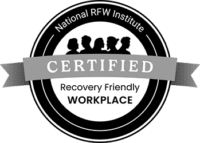Nurture Your Nurses: Specific Ways to Tackle Productivity and Stress Management
Both hospital management and nurses agree that hospitals must do what they can to increase efficiencies related to patient care and make nurse caseloads more manageable. In a recent study about the correlation between nursing staff and readmission reduction, an important conclusion was drawn:
“Investment in nursing is a potential system-level intervention to reduce readmissions that policy makers and hospital administrators should consider in the new regulatory environment as they examine the quality of care delivered to US hospital patients.” — Matthew D. McHugh, Associate professor of nursing at the Center for Health Outcomes and Policy Research, School of Nursing, University of Pennsylvania, and a senior fellow at the Leonard Davis Institute of Health Economics, University of Pennsylvania, in Philadelphia
Having a productive nursing staff results in lower stress levels and an increase in their Joy in Practice. Here are some of the ways that hospital administration and nurse managers can help:
Stress Management
High stress levels and overwhelming patient volumes are common issues for nurses, and are contributing to the skilled nursing shortage. According to a study in the Journal of the American Medical Association, each additional patient over four per nurse carries a 23 percent risk of increased burnout and a 15 percent decrease in job satisfaction. Long hours and the physical and emotional strain of patient care can take their toll and commonly leads to employee burnout. Consider providing training to nurses to help them manage their workload and give them more confidence in their skills. Offering support as a manager can build an emotional foundation to help nurses navigate a stressful day-to-day work environment.
Communication
Communication issues negatively impact the economic well-being of hospitals and also result in wasted time for nurses. Nurses spend a large part of their time managing their patients and communicating with other staff members. Hospitals that support nurses with communication technologies can see an improvement in both productivity and overall quality of work. Some examples of these communication technologies include EHRs, telehealth tools, utilization of mobile devices and tablets, and patient-friendly technologies.
Bedside Documentation
Typically, in shift-to-shift reporting, nurses spend the first portion of their shift being brought up to speed on the patients they will care for. That same nurse also spends the end of their shift transcribing or recording reports for the oncoming nurses. This two-session documentation process consumes large chunks of time of two nursing shifts, stealing valuable time from direct patient care. By switching to bedside shift reporting, nurses can use their time more effectively.
Bedside shift reporting is a form of documentation that takes place at the patient’s bedside. Nurses, patients, and family or friends are all involved in the reporting, giving all parties the ability to ask questions and be educated on the patient’s progress. This method saves time and gives opportunities for both the oncoming nurse and the patient to ask questions and ensure that everyone is on the same page.
Maintain Positive Morale
One way to help alleviate the stressors of the job is to foster a positive work environment. Showing appreciation to nurses does not have to be a grand gesture. Encouraging and empowering staff improves retention and decreases turnover. Here are some ideas:
- Handwritten notes of thanks for their dedication
- Hosted lunch where food, a speaker, or networking/light entertainment is included
- Peer to peer recognition — use tools like GoMo Health Concierge Care® to allow patients and colleagues to give staff applause
- Recognize achievements such as work anniversaries or milestones
Delegating Assignments
By assigning tasks more efficiently, nurses will have more time to focus on the tasks at which they excel. Non-emergent tasks can be routed through the appropriate department, bypassing the nurse and leaving them to better utilize their time. As part of the Concierge Care® suite of mobile engagement solutions, the Bedside Concierge™ addresses the non-clinical, non-emergent needs of each patient with in-the-moment access to their own personal “Comfort Concierge.” Using a mobile device, tablet or laptop, patients can make real-time requests from a menu of comfort services – like room temperature adjustment, requesting a hot meal, pet therapy or a visit from clergy. To learn more about Bedside Concierge™, click here.
The above techniques enable nurses to focus on what they are expertly trained to do – provide direct clinical patient care. Improving productivity for nurses goes a long way in contributing to Joy in Practice, which is a crucial component of the NIH’s Quadruple Aim. For a demo of Concierge Care® and to learn how it can help achieve these goals, click the button below.







Find Us Online